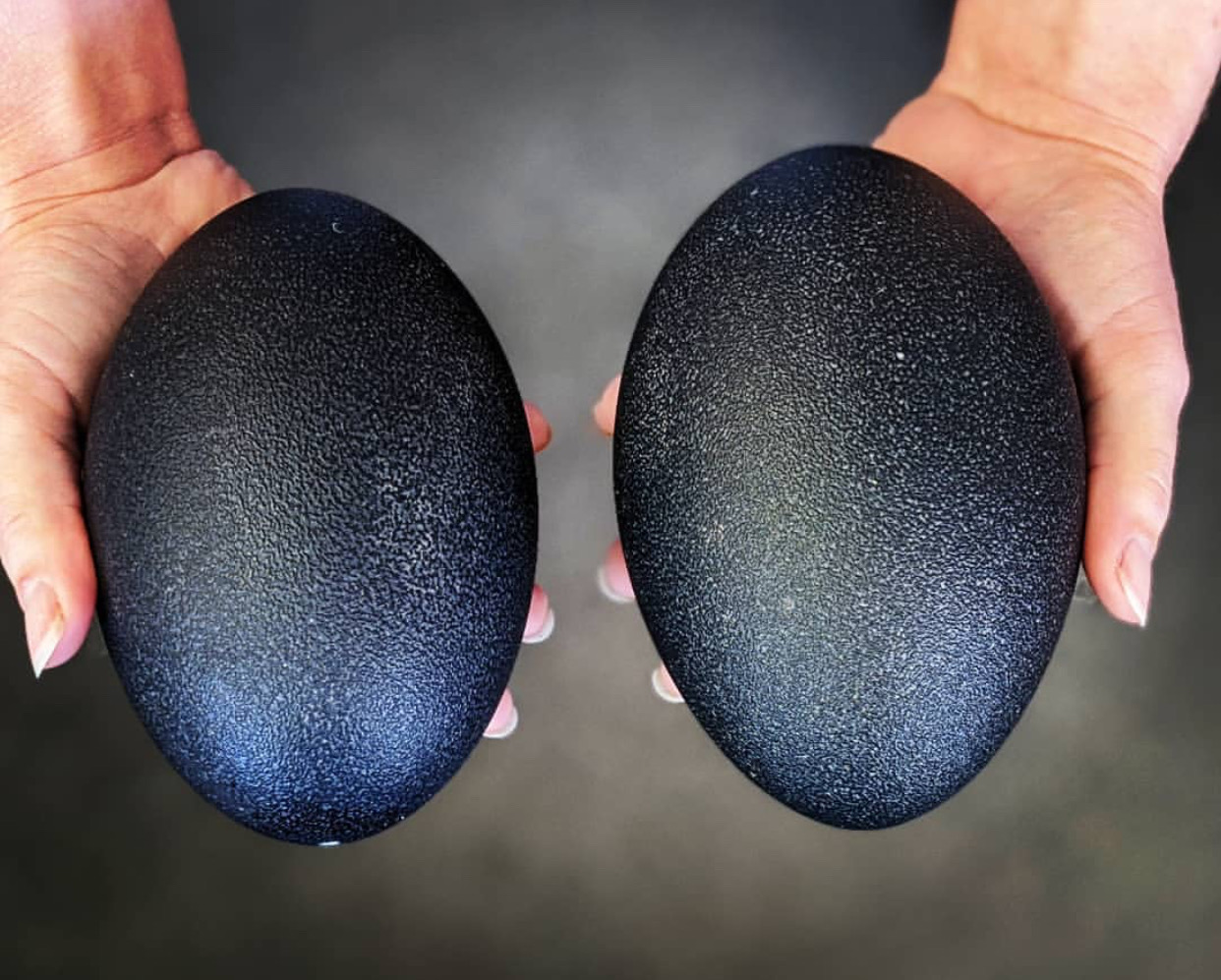
Thanks for all your contributions, keep them camming, thanks.
The emu is the second tallest bird in the world, only being exceeded in height by the ostrich; the largest individuals can reach up to 150 to 190 cm (59 to 75 in) in height. Measured from the bill to the tail, emus range in length from 139 to 164 cm (55 to 65 in), with males averaging 148.5 cm (58.5 in) and females averaging 156.8 cm (61.7 in). Emus are the fourth or fifth heaviest living bird after the tw…
The etymology of the common name "emu" is uncertain, but is thought to have come from an Arabic word for large bird that was later used by Portuguese explorers to describe the related cassowary in Australia and New Guinea. Another theory is that it comes from the word "ema", which is used in Portuguese to denote a large bird akin to an ostrich or crane. In Victoria, some terms for the emu were Barrimal in the Dja Dja Wurrung language, myoure in Gunai, and courn in J…
Emus were first reported as having been seen by Europeans when explorers visited the western coast of Australia in 1696. This was during an expedition led by Dutch captain Willem de Vlaminghwho was searching for survivors of a ship that had gone missing two years earlier. The birds were known on the eastern coast before 1788, when the first Europeans settled there. The birds were first …
Destribution and habitat
Once common on the east coast of Australia, emus are now uncommon there; by contrast, the development of agriculture and the provision of water for stock in the interior of the continent have increased the range of the emu in arid regions. Emus live in various habitats across Australia both inland and near the coast. They are most common in areas of savannah woodland and sclerophyllf…
Emus are diurnal birds and spend their day foraging, preening their plumage with their beak, dust bathing and resting. They are generally gregarious birds apart from the breeding season, and while some forage, others remain vigilant to their mutual benefit. They are able to swim when necessary, although they rarely do so unless the area is flooded or they need to cross a river.
Relationship whith humans!
Emus were used as a source of food by indigenous Australians and early European settlers. Emus are inquisitive birds and have been known to approach humans if they see unexpected movement of a limb or piece of clothing. In the wild, they may follow and observe people. Aboriginal Australians used a variety of techniques to catch the birds, including spearing them while they drank at w….
Status and coservation!
In John Gould's Handbook to the Birds of Australia, first published in 1865, he lamented the loss of the emu from Tasmania, where it had become rare and has since become extinct; he noted that emus were no longer common in the vicinity of Sydney and proposed that the species be given protected status. In the 1930s, emu killings in Western Australia peaked at 57,000, and cullswere also …
- Emus can go without food for 2 months.
- Female Emu birds are slightly larger than males. The female Emu also dominates during breeding. Once she has laid her large
green eggs, the father will take over the incubation. At this stage she may walk away and never return. Sometimes she will find
another partner and breed again.
Meanwhile the father is left to incubate the eggs. In this time he will not leave to drink or eat. He does not leave the nest for two months. - Emus are very fast, but not faster than kangaroos.>
- Emus can run at 50km per hour, which is faster than Usain Bolt, the fastest man. But contrary to popular myth, they are not faster than Eastern Grey Kangaroos – who can reach a top speed of 71km per hour.
- There were Dwarf Emus.
- Before Europeans arrived in Australia, two dwarf species of Emu lived on Kangaroo and King Islands in southern Australia. Sadly, they were exterminated by the new settlers. This illustrates how our actions can affect the world around us.
- Emus have a powerful voice.
- An Emu has a low deep voice that can be likened to a hollow drum. They can also grunt and whistle. The sound can be loud, but is so low frequency it is hard to record. In some areas you can hear an Emu from two kilometres away. We often hear emus in the distance at Mungo.



David Muller
Posted on 12th June, 2016Lorem Ipsum is that it has a more-or-less normal distribution of letters, as opposed to using 'Content here, content here', making it look like readable English
John Doe
Posted on 12th June, 2016Lorem Ipsum is that it has a more-or-less normal distribution of letters, as opposed to using 'Content here, content here', making it look like readable English
Admin
Posted on 12th June, 2016 AuthorLorem Ipsum is that it has a more-or-less normal distribution of letters, as opposed to using 'Content here, content here', making it look like readable English
David Muller
Posted on 12th June, 2016Lorem Ipsum is that it has a more-or-less normal distribution of letters, as opposed to using 'Content here, content here', making it look like readable English
Jhon Doe
Posted on 12th June, 2016Lorem Ipsum is that it has a more-or-less normal distribution of letters, as opposed to using 'Content here, content here', making it look like readable English